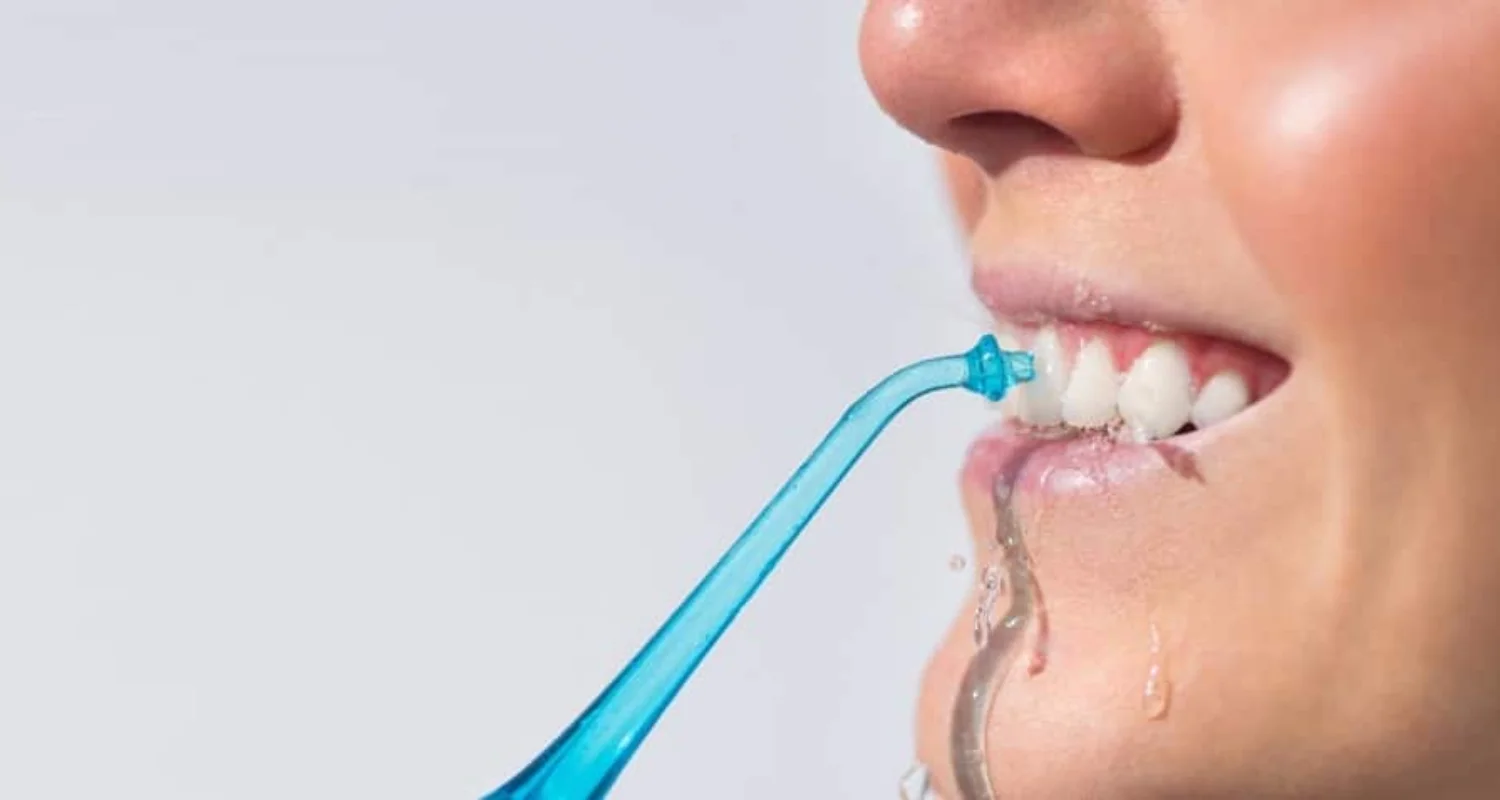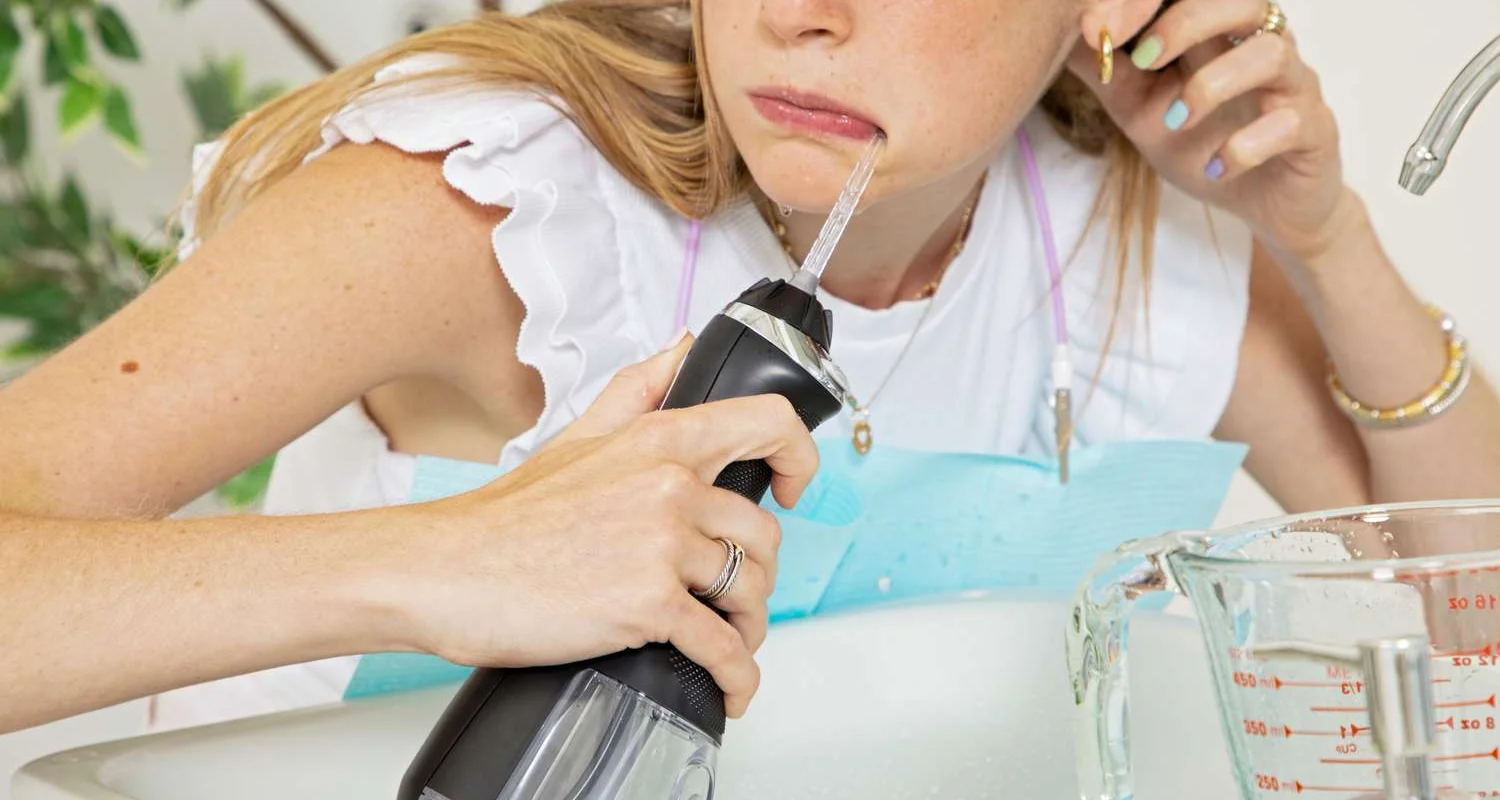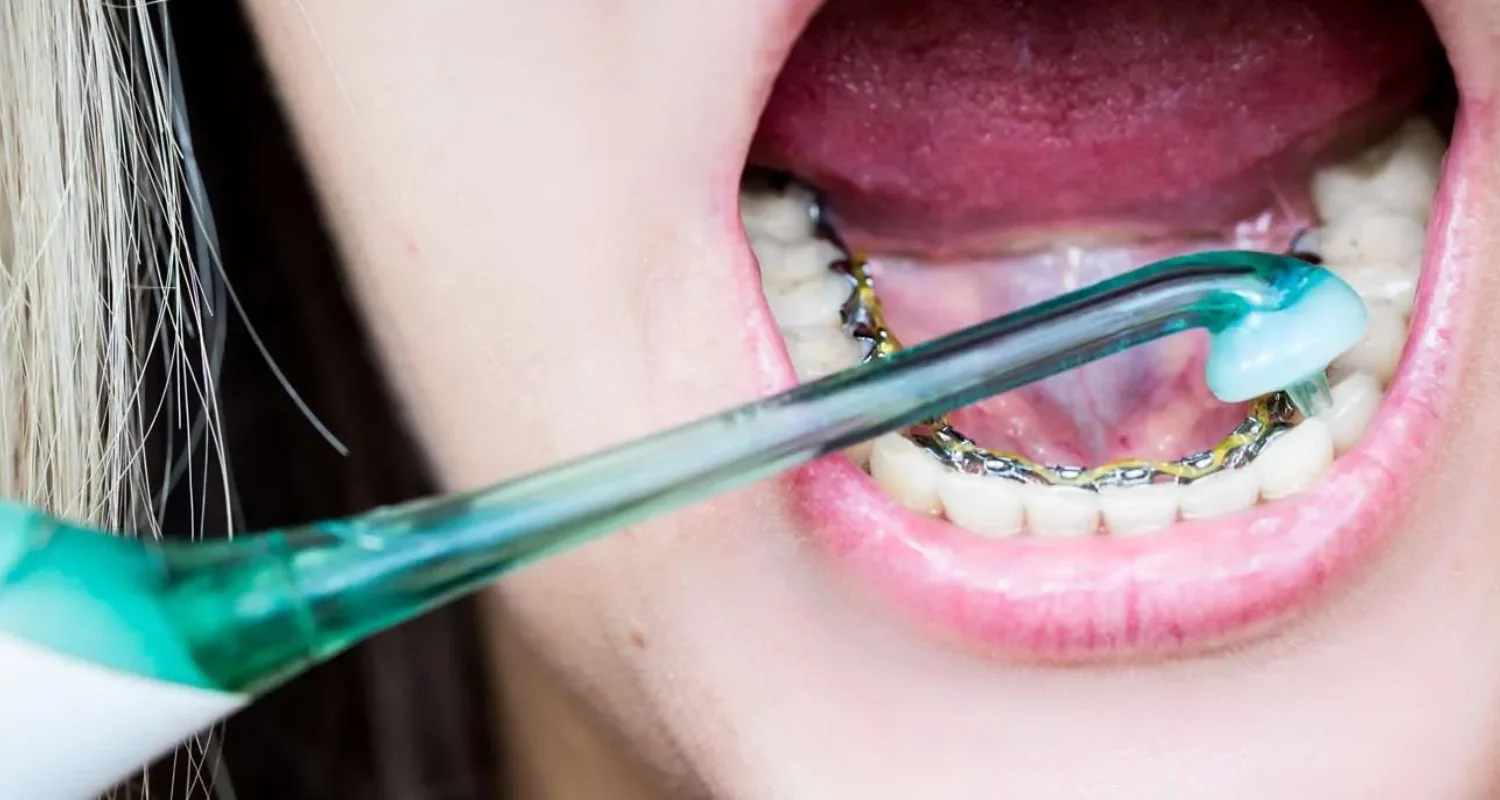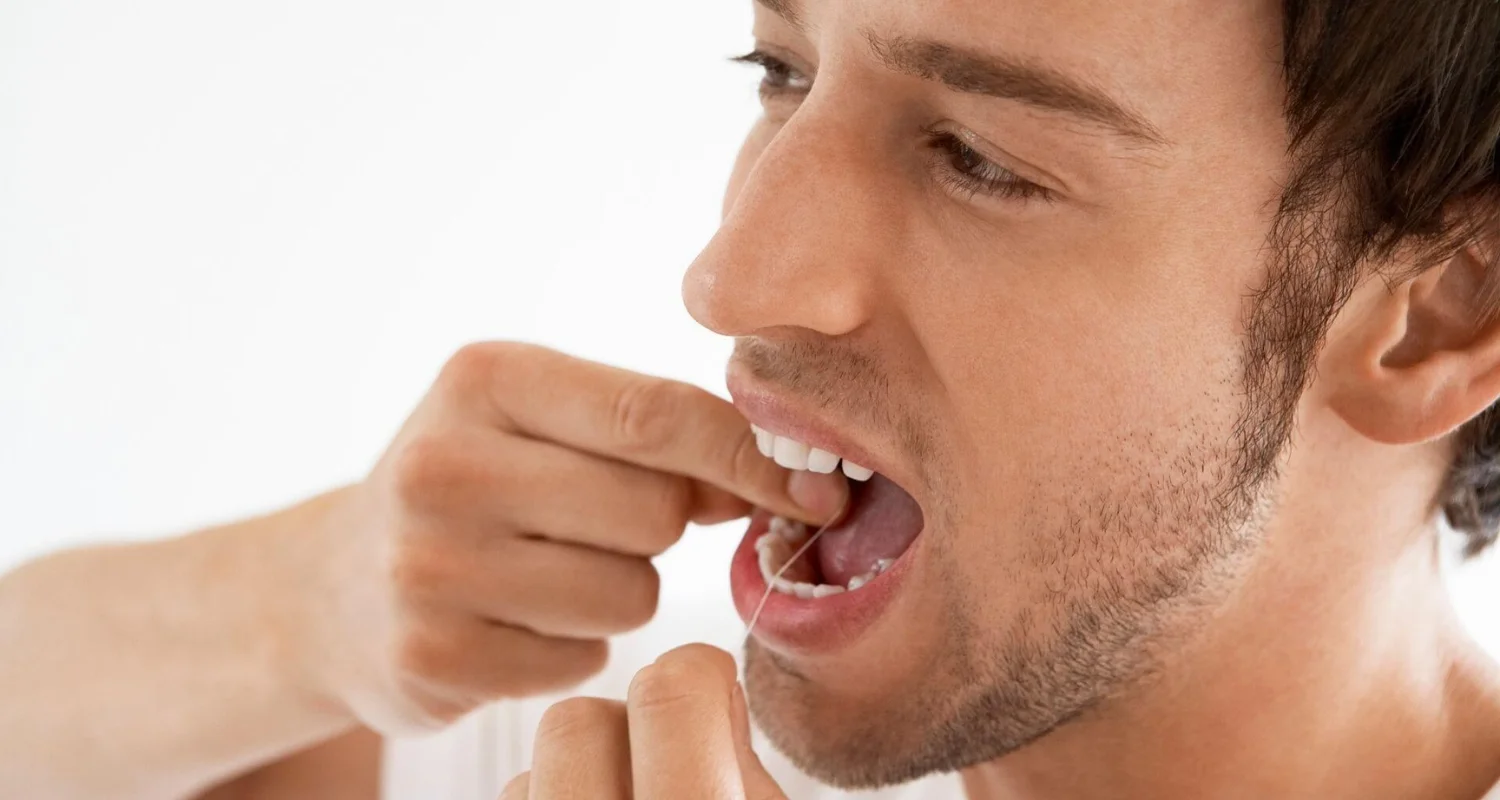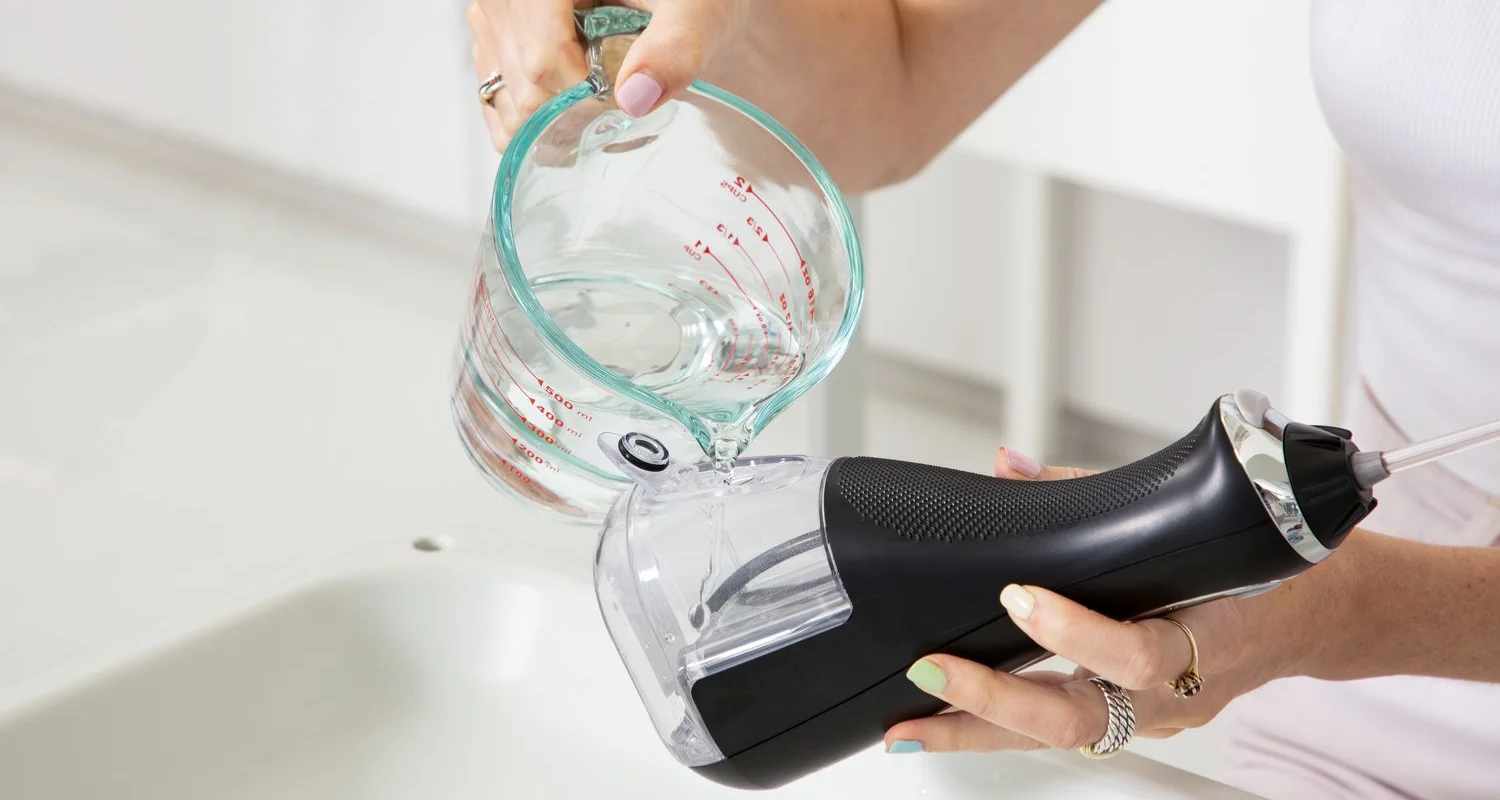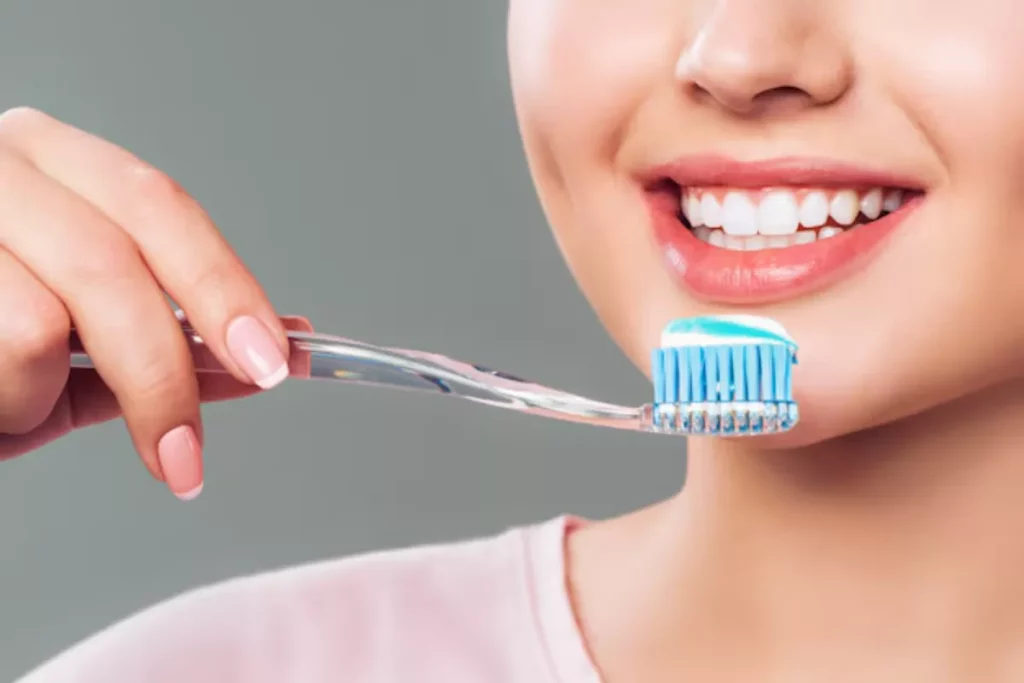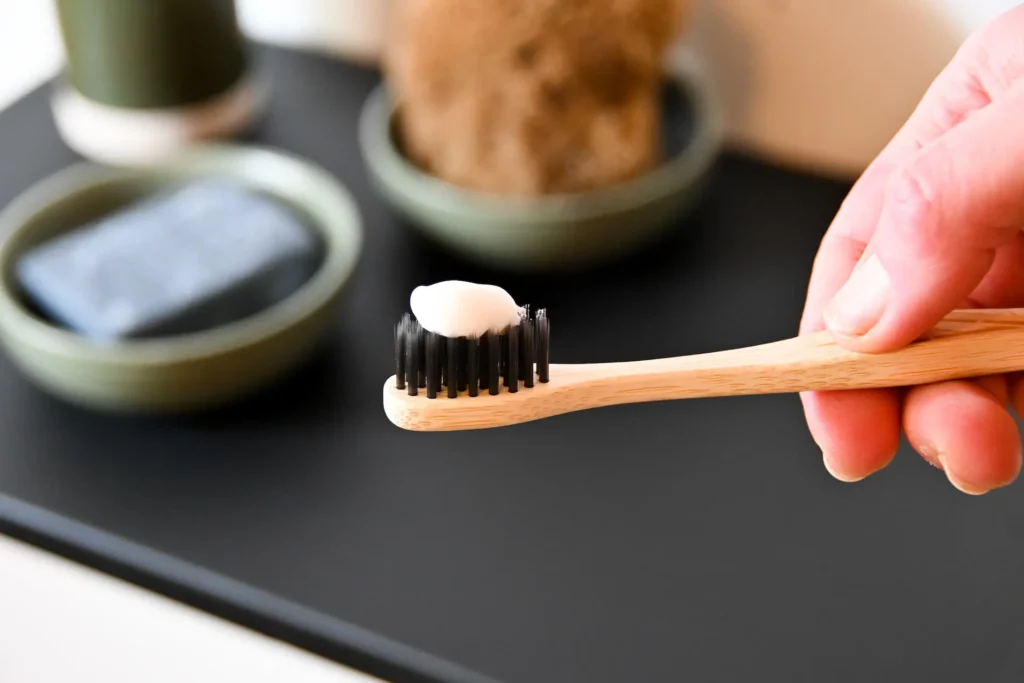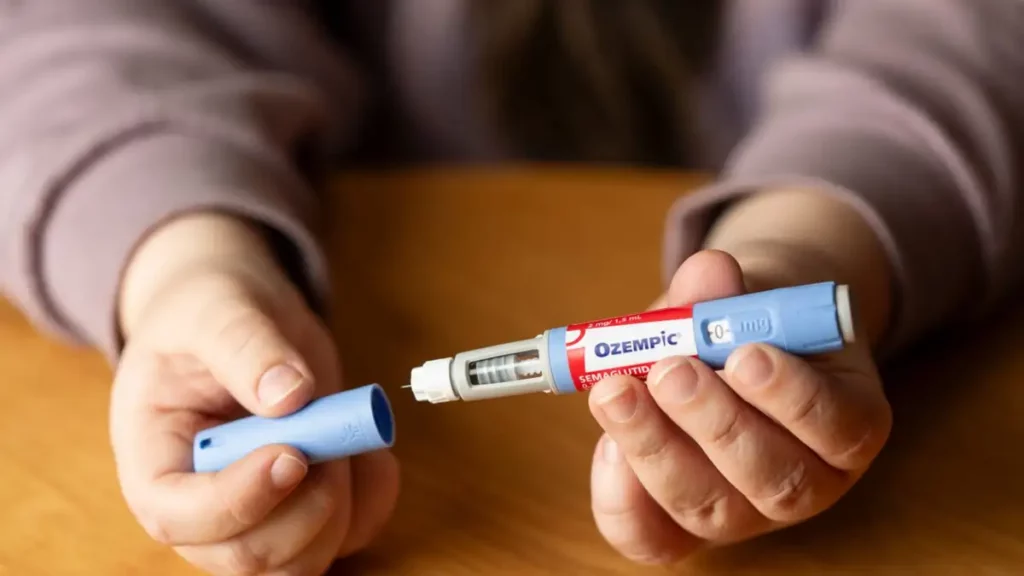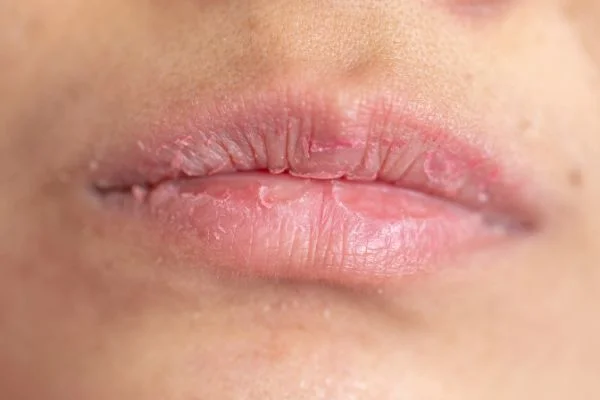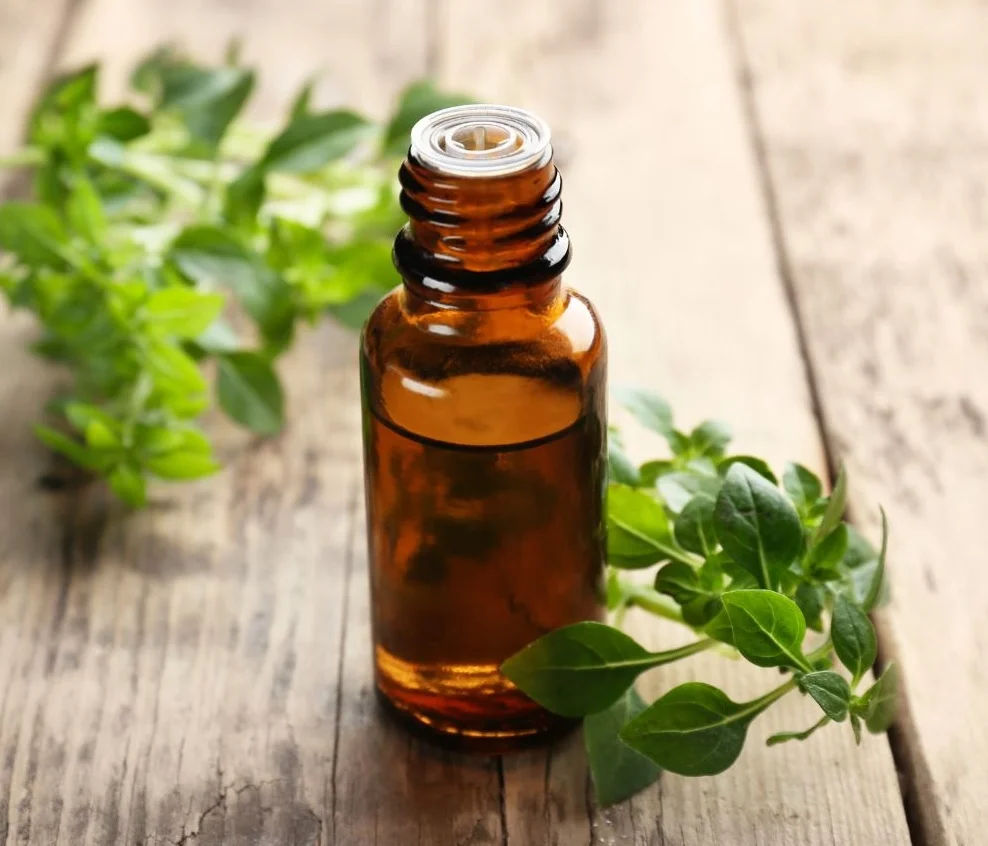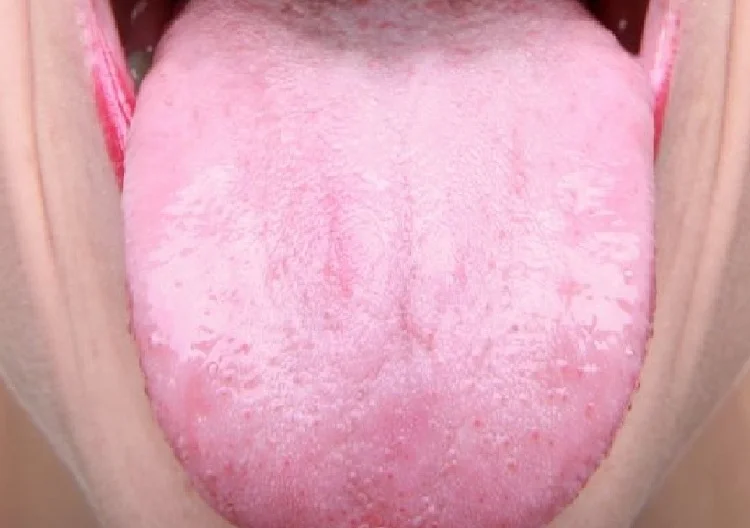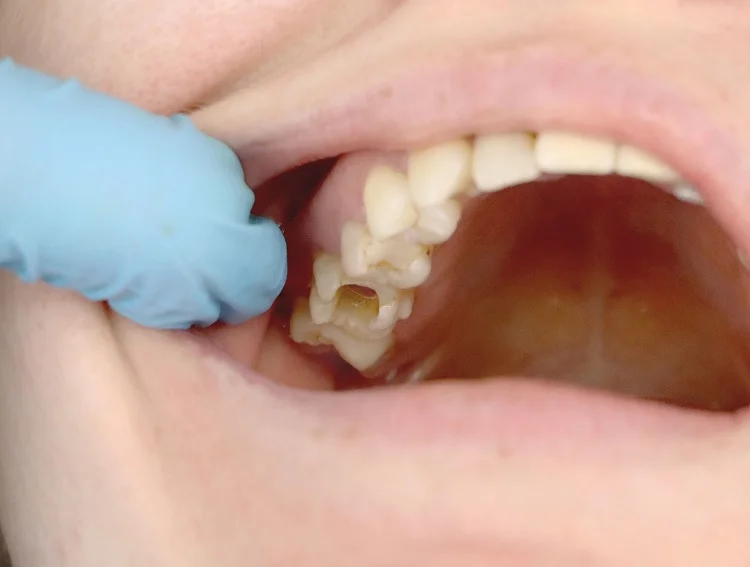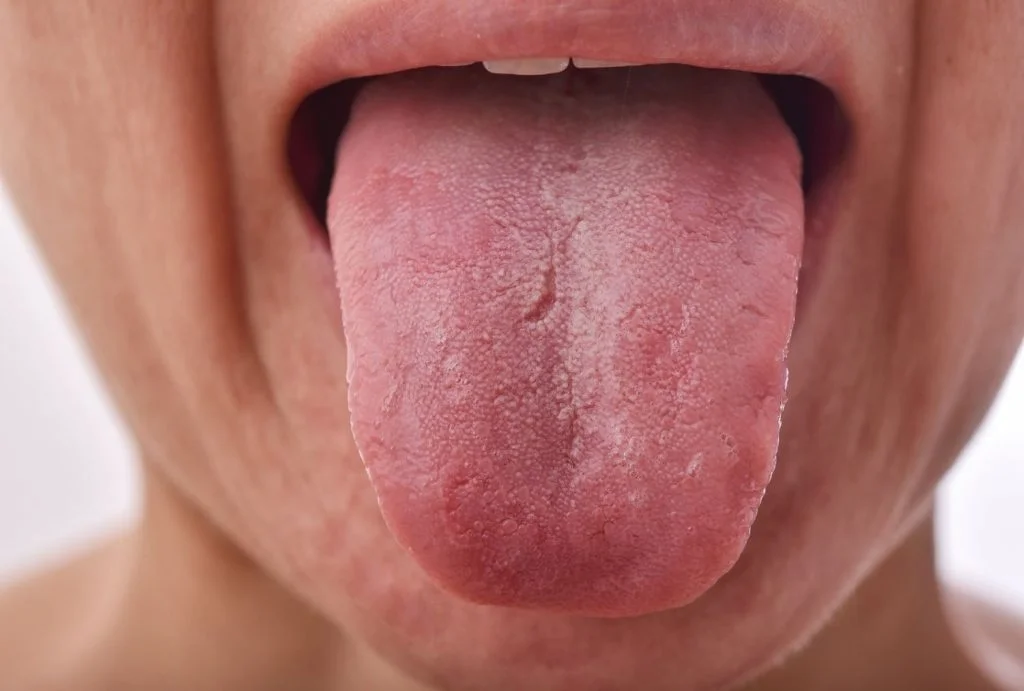Last Updated on: 19th September 2025, 12:35 pm
Water flosser vs flossing: what’s the best, according to dentists?
Brushing your teeth with the correct technique is essential, but it’s not enough to keep your mouth truly clean. Food particles and plaque love to hide between your teeth, and if you don’t remove them, you’re at a higher risk for cavities, gum disease, and even bad breath. That’s why cleaning between your teeth is a crucial step in any good oral hygiene routine.
For years, dental floss has been the gold standard for reaching those tight spaces. But in recent years, water flossers have become a popular alternative, offering a modern and effective way to clean between teeth. When it comes to water flosser vs. flossing, both have their pros and cons, making it tricky to decide which one is best for you.
So, which one should you choose? In this article, we’ll break down the key differences between water flosser vs flossing to help you find the best fit for your oral care routine.
Water flosser vs flossing: How do they work?
When it comes to cleaning between your teeth, you have two main options: traditional floss and a water flosser. Both help remove plaque and food particles, but they work in different ways and have unique benefits, depending on your needs.
Dental floss: the classic choice
Dental floss has been a go-to for cleaning between teeth for years. It’s a thin strand made of nylon, silk, or Teflon that helps remove food and plaque from those hard-to-reach spots your toothbrush can’t get to. The key to flossing properly is to slide it gently between each tooth and move it down to the gum line without pressing too hard. This helps clean the teeth effectively without irritating your gums.
But did you know there’s more than one type of floss? Here are a few options to suit different needs:
● Dental tape: A wider, flatter floss that works well for people with bigger gaps between their teeth.
● Biodegradable floss: An eco-friendly alternative for those looking to reduce their environmental impact.
● Floss picks: A small plastic tool with a piece of floss attached, making it easier to reach back teeth. Perfect for those who find traditional floss tricky to use. Get DenTek Triple Clean here.
You can also choose between waxed or unwaxed floss, as well as flavored or unflavored options:
● Unwaxed floss is thinner and great for tight spaces, but it can snap more easily.
● Waxed floss is stronger and easier to handle, though it may be harder to slide between very close teeth.
● Flavored floss (like mint, cinnamon, or fruit) doesn’t change how well it works, but it makes flossing feel fresher and more pleasant. Here you can buy flavored floss.
No matter which type you choose, flossing daily is one of the best ways to keep your teeth and gums healthy!
Water flosser: A powerful clean with water
A water flosser is a handy device that uses a stream of pressurized water to wash away food particles and bacteria from between the teeth and along your gumline. It’s a great alternative to traditional flossing, especially for those who find traditional flossing difficult or uncomfortable.
Not all water flossers are the same, here are the main types and what makes each one unique:
● Countertop (plug-in): The most powerful option, with large water tanks and adjustable pressure settings. These sit on your bathroom counter and need to be plugged in. They’re great for deep cleaning, but they take up more space and need regular refilling.
● Portable (cordless or battery-operated): Compact, lightweight, and perfect for travel or small bathrooms. These run on rechargeable batteries or disposable ones, making them super convenient. However, they may not be as powerful as countertop models.
● Faucet- or shower-connected: These attach directly to your sink or shower, so there’s no need for electricity or refilling a water tank. They’re low-maintenance, but they can be less flexible and don’t always offer as much pressure control.
Each type has its perks, so the best choice depends on your space, lifestyle, and how often you plan to use it. If you want a deep clean with minimal effort, a water flosser could be the perfect addition to your routine. Buy Waterpik from this link!
Water flosser vs flossing: pros and cons
Both water flosser vs flossing help clean between your teeth, but they work differently and have their own pros and cons. Water flosser vs flossing: the right choice depends on your personal needs and preferences. Here’s a side-by-side comparison:
Water flosser
Pros:
● Gentle on gums: Perfect for those with sensitive gums or who experience frequent bleeding.
● Easy to use: Great for people with braces, implants, or dental bridges.
● Promotes gum health: The pulsating water stream helps massage the gums and improve circulation.
Cons:
● More expensive than traditional floss.
● Requires electricity or batteries to operate.
● Less travel-friendly due to its size.
A water flosser is a great choice for people with braces, implants, or bridges, those with sensitive gums, or anyone who finds traditional floss difficult to use.
Dental floss
Pros:
● Affordable and easy to find: A budget-friendly option available almost anywhere.
● Provides a deep clean: Effectively removes plaque and food particles from between teeth.
● Portable and convenient: No need for batteries, electricity, or extra space.
Cons:
● Not always effective in hard-to-reach areas, especially for people with braces or bridges, unless they used a correct technique.
● Can be difficult for people with arthritis, braces, or limited hand mobility.
● Might irritate gums if used too aggressively.
Flossing is the best option for people with tightly spaced teeth, those looking for an affordable and effective cleaning method, or anyone who prefers a detailed, precise clean.
Expert recommendations for oral hygiene
Flossing remains the gold standard for removing plaque between teeth, according to the American Dental Association (ADA). However, water flossers have proven effective in reducing gingivitis and gum inflammation, particularly for people with braces or dental work. Some studies suggest that they can remove up to 99.9% of plaque biofilm from treated areas.
For optimal oral hygiene, many dentists recommend using both methods together. Flossing physically removes plaque buildup, while a water flosser helps flush out food particles and bacteria. If you want to upgrade your dental care routine, combining both is the best approach. For that, of course, you need to use the best oral health productos. Here are our recommendations for you.
Water Flosser vs flossing: How to use them properly?
Flossing tips:
● Use about 18 inches of floss, wrapping most of it around your middle fingers.
● Gently slide it between your teeth without snapping it against your gums.
● Curve it around each tooth and move it up and down.
● Use a fresh section of floss for each tooth to avoid spreading bacteria.
Water flosser tips:
● Fill the reservoir with warm water (you can add mouthwash for extra freshness).
● Start with the lowest pressure setting and increase gradually.
● Aim the tip at a 90-degree angle to the gum line.
● Move slowly from tooth to tooth, pausing between each one.
The best oral hygiene routine
There’s no clear winner in the debate of water flosser vs flossing, as both offer benefits that complement each other. Flossing is still the most effective way to remove plaque and prevent gum disease, especially in tight spaces. Meanwhile, water flossers can be a great addition to your oral hygiene routine, particularly for people with braces, implants, or sensitive gums.
Regardless of which method you choose, consistency is key. Make it a daily habit to clean between your teeth, use the tools that work best for you, and visit your dentist regularly for check-ups. Staying committed to your oral hygiene routine is the best way to keep your teeth and gums healthy.
Frequently Asked Questions
How often should I use a water flosser?
It’s recommended to use a water flosser at least once daily, preferably before brushing your teeth, to remove debris and reduce plaque buildup.
Are water flossers suitable for children?
Yes, water flossers can be suitable for children, especially those who struggle with traditional flossing. Many brands offer models specifically designed for kids, featuring gentler pressure settings, smaller nozzles, and fun designs to encourage good oral hygiene habits.
Does flossing hurt?
Flossing shouldn’t be painful. If your gums bleed or feel sore, it could be due to gingivitis or improper technique. Floss gently and consistently, and the bleeding should stop after a few days of regular flossing. If it persists, consult your dentist.
Do I still need to brush my teeth if I use a water flosser?
Yes! Water flossers are designed to clean between teeth and along the gumline, but they don’t replace brushing. You should still brush your teeth twice a day with fluoride toothpaste.
Is it normal for floss to smell bad after use?
Yes, if floss smells bad after use, it’s likely removing food debris and plaque where bacteria have been accumulating. A persistent bad odor may indicate gum disease or trapped food particles, making regular flossing and dental check-ups essential.
Share
References
1. Barney, A. (2024, 11 June). What Is a Waterpik? WebMD. https://www.webmd.com/oral-health/what-is-waterpik
2. Mohapatra, S., Rajpurohit, L., Mohandas, R., & Patil, S. (2023). Comparing the effectiveness of water flosser and dental floss in plaque reduction among adults: A systematic review. Journal Of Indian Society Of Periodontology, 27(6), 559-567. https://journals.lww.com/jisp/fulltext/2023/27060/comparing_the_effectiveness_of_water_flosser_and.5.aspx
3. Whelan, C. (2023, 19 May). Waterpik vs. Flossing: Pros and Cons. Healthline. https://www.healthline.com/health/dental-and-oral-health/waterpik-vs-flossing
4. Worthington, H. V., MacDonald, L., Pericic, T. P., Sambunjak, D., Johnson, T. M., Imai, P., & Clarkson, J. E. (2019). Home use of interdental cleaning devices, in addition to toothbrushing, for preventing and controlling periodontal diseases and dental caries. Cochrane Library, 2020(4). https://doi.org/10.1002/14651858.cd012018.pub2
5. Zhou, C. (2022, 6 December). Dental floss vs. water flosser: Which is better?. Mayo clinic. https://www.mayoclinic.org/healthy-lifestyle/adult-health/expert-answers/dental-floss/faq-20058112
-
Dr. Yeidy Carolina Mesa [Author]
DDS Yeidy Carolina Mesa Passionate Dentist | Advocate for Accessible Oral Health Education Graduating from Universidad CES in 2022, I am a dedicated general dentist with a lifelong passion for helping others and making a meaningful impact in the world. My journey into dentistry began at the age of 7, inspired by my own experience with braces and overcoming a fear of the dentist. This personal journey shaped my mission to help patients conquer their own dental anxieties and embrace a healthier,...
View all posts
-
Nayibe Cubillos M. [Medical Reviewer]
Pharmaceutical Chemestry |Pharmaceutical Process Management | Pharmaceutical Care | Pharmaceutical Services Audit | Pharmaceutical Services Process Consulting | Content Project Manager | SEO Knowledge | Content Writer | Leadership | Scrum Master
View all posts
A healthcare writer with a solid background in pharmaceutical chemistry and a thorough understanding of Colombian regulatory processes and comprehensive sector management, she has significant experience coordinating and leading multidisciplina...



